The Future of Dermatology
Join Dr. Faranak Kamangar, MD, every week as she chats with various guests about the future of dermatology. Each week, Dr. Kamangar and her guests cover topics from psoriasis, to eczema, to skin care, to AI, and more. Whether you’re a doctor or a patient, these episodes provide valuable information about your skin and how to navigate the world of dermatology.
Episodes

4 days ago
4 days ago
Summary
In this episode of the Future of Dermatology podcast, Dr. Farah Kamangar interviews Dr. Paradi Mirmirani, MD, a leading expert in hair disorders. They discuss the latest advancements in treating hair loss, particularly focusing on frontal fibrosing alopecia and scarring alopecia. Dr. Mirmirani shares her treatment algorithms, emphasizing the importance of removing triggers and using innovative therapies like oral minoxidil and JAK inhibitors. The conversation highlights the evolving landscape of dermatology and the exciting future of hair loss treatments.
Dr. Mirmirani's paper that is spoken about in this podcast will be published on November 20th, 2024.
Takeaways
Dr. Mirmirani is a leading expert in hair disorders.
Frontal fibrosing alopecia is increasingly common.
Removing environmental triggers can significantly improve patient outcomes.
Dutasteride is preferred over finasteride for treating FFA.
Oral minoxidil is an effective treatment for hair loss.
Dermatoscopy is essential for assessing hair loss conditions.
New treatments for alopecia areata are now FDA-approved.
Patient education is crucial for effective treatment.
The landscape of hair loss treatments is rapidly evolving.
Future research will focus on personalized treatment options for hair disorders.
Chapters
00:00 - Introduction to Dermatology and Dr. Mirmirani's Expertise
02:09 - Frontal Fibrosing Alopecia: Treatment Approaches
10:24 - Innovative Therapies for Scarring Alopecia
18:46 - Future of Hair Loss Treatments and Research
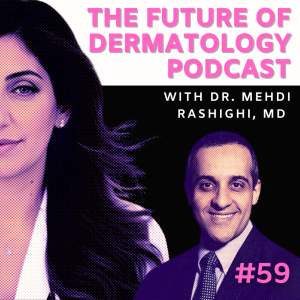
Tuesday Nov 05, 2024
Tuesday Nov 05, 2024
Summary
Dr. Mehdi Rashighi, MD, discusses groundbreaking research in dermatology focusing on autoimmune skin diseases. The conversation delves into multiomics research, the role of interferons in skin diseases, and the impact of UV exposure on conditions like cutaneous lupus and dermatomyositis. The episode highlights the importance of understanding cytokine signatures and the potential for new treatments targeting specific immune cells.
Takeaways
The SFDerm 2024 meeting showcased significant advancements in dermatology.
Multiomics research is crucial for understanding autoimmune skin diseases.
Type one interferon plays a key role in cutaneous lupus and dermatomyositis.
Cytokine signatures can help identify new treatment targets.
Plasmacytoid dendritic cells are important in the pathogenesis of lupus.
UV exposure can exacerbate skin diseases like lupus and dermatomyositis.
Clinical trials are exploring monoclonal antibodies against interferons.
Understanding photosensitivity is vital for managing lupus patients.
Research is ongoing to better understand the immune response in skin diseases.
Chapters
00:00 - Introduction to the Future of Dermatology Podcast
00:56 - Exploring Multiomics in Dermatology Research
02:53 - Understanding Interferon Signatures in Skin Diseases
05:58 - Photosensitivity in Cutaneous Lupus and Dermatomyositis
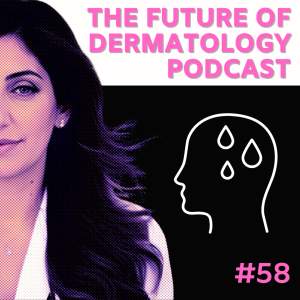
Tuesday Oct 29, 2024
Tuesday Oct 29, 2024
Summary
In this episode of The Future of Dermatology Podcast, Dr. Faranak Kamangar discusses hyperhidrosis, a common condition characterized by excessive sweating. The conversation covers the causes, prevalence, and various treatment options available, including topical treatments, botulinum toxin injections, oral medications, and advanced technologies like ionophoresis and miradry. Dr. Kamangar emphasizes the importance of patient education and setting realistic expectations for treatment outcomes.
Takeaways
Hyperhidrosis is often diagnosed by patients before seeing a doctor.
The condition can be debilitating and affects various aspects of life.
Most cases of hyperhidrosis are primary, with few secondary causes.
Topical antiperspirants are the first line of treatment.
Setting expectations is crucial for patient satisfaction with treatments.
Botulinum toxin is effective but can be painful for patients.
Oral medications can be used but have contraindications.
Ionophoresis is a viable option for some patients.
Emerging technologies like microneedling for botulinum toxin show promise.
Patient education is key to managing hyperhidrosis effectively.
Chapters
00:00 - Introduction to Hyperhidrosis
02:45 - Understanding Hyperhidrosis: Causes and Prevalence
06:00 - First-Line Treatments for Hyperhidrosis
09:13 - Advanced Treatment Options: Botulinum Toxin and Microneedling
11:51 - Oral Medications and Ionophoresis
15:06 - Injectable Treatments and Patient Management
17:47 - Emerging Technologies and Future Directions in Treatment
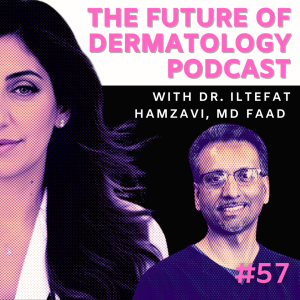
Tuesday Oct 22, 2024
Tuesday Oct 22, 2024
Summary
From the 2024 Annual SF Dermatology Society sessions, Dr. Iltefat Hamzavi shares insights on vitiligo, its psychosocial impacts, and the pathophysiology behind the condition. The session emphasizes the need for effective treatment strategies and the importance of patient well-being in managing skin conditions.
Takeaways
Dermatology is a community-focused specialty.
The VASI score is crucial for assessing vitiligo severity.
Vitiligo has a significant psychosocial impact on patients.
Younger patients with vitiligo show higher rates of depression.
Effective treatment of vitiligo requires time and patience.
Counseling patients is essential for successful treatment outcomes.
The face is the most responsive area for vitiligo treatment.
Oxidative stress plays a key role in vitiligo pathophysiology.
A multi-faceted approach is necessary for treating vitiligo.
Future dermatology meetings will continue to address these important topics.
Chapters
00:00 - Introduction to the Dermatology Podcast
01:58 - The Importance of Community in Dermatology
03:25 - Understanding the Impact of Vitiligo
06:45 - Pathophysiology and Treatment of Vitiligo
10:09 - Conclusion and Future Directions in Dermatology
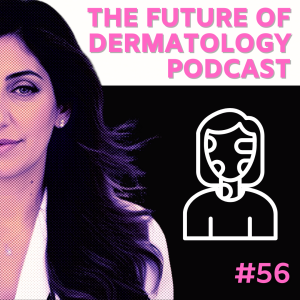
Tuesday Oct 15, 2024
Tuesday Oct 15, 2024
Summary
This The Future of Dermatology Podcast focuses on recent advancements in the treatment of vitiligo, particularly highlighting the role of Afamelanotide in clinical trials. Dr. Kamangar includes insights from the SF Derm 2024 Annual Meeting, the mechanisms of vitiligo, and the potential of Afamelanotide to aid in repigmentation without affecting the immune system. Clinical trial results and patient outcomes are also discussed, emphasizing the importance of this treatment for patients with darker skin types.
Takeaways
Vitiligo treatments have traditionally focused on the immune system.
Afamelanotide aims to boost repigmentation without immune suppression.
The study is a phase three trial comparing Afamelanotide with narrowband UVB.
Initial results show promise for Fitzpatrick skin types four to six.
The treatment is suitable for adolescents and adults aged 12 and up.
Photos from trials indicate significant repigmentation in patients. - Afamelanotide has a good safety profile based on previous treatments.
The drug is being studied for its broader dermatological applications. - There are concerns about unregulated versions of Afamelanotide in the market.
Awareness of Afamelanotide is crucial for dermatologists.
Chapters
00:00 - Introduction to the Future of Dermatology Podcast
01:20 - Exploring Vitiligo Treatments and Research
03:10 - Afamelanotide: A New Hope for Repigmentation
05:37 - Clinical Results and Implications of Afamelanotide
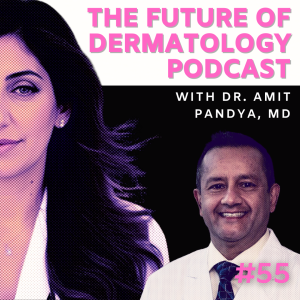
Tuesday Oct 08, 2024
Tuesday Oct 08, 2024
Summary
From the 2024 Annual SF Dermatology Society sessions, Dr. Amit Pandya discusses the complexities of vitiligo, a common skin disorder affecting millions worldwide. He explores the importance of understanding patient perspectives, the pathogenesis of vitiligo, and the latest treatment approaches. This talk emphasizes the need for personalized patient care and the significance of early intervention for better outcomes. The session concludes with a call for increased awareness and education in dermatology.
Takeaways
Vitiligo affects about 1% of Americans and 70 million people worldwide.
Patients with vitiligo often feel abandoned due to a lack of specialized care.
The peak age of onset for vitiligo is during young adulthood, which can be particularly stressful.
Understanding the pathogenesis of vitiligo is crucial for effective treatment.
The treatment of vitiligo requires patience and realistic expectations from patients.
Photographs are essential for monitoring treatment progress in vitiligo patients.
Public education is needed to encourage early treatment for vitiligo.
Dermascopy can help assess the prognosis of vitiligo patients.
Shared decision-making is vital in managing treatment options for patients.
Every patient's experience with vitiligo is unique and should be approached individually.
Chapters
00:00 - Introduction to the Future of Dermatology Podcast
00:58 - The Importance of Vitiligo Awareness
02:53 - Understanding Vitiligo: Patient Perspectives
06:07 - Pathogenesis of Vitiligo
08:55 - Treatment Approaches for Vitiligo
11:50 - Prognosis and Patient Management
15:10 - Conclusion and Future Directions
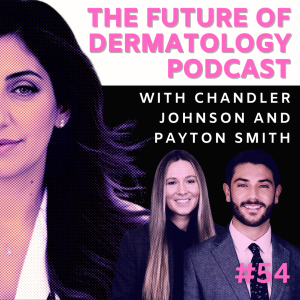
Tuesday Oct 01, 2024
Episode 54 - The Journey to Match Day | The Future of Dermatology Podcast
Tuesday Oct 01, 2024
Tuesday Oct 01, 2024
Summary
In this episode, medical students Chandler Johnson and Payton Smith share their experiences navigating the residency application process in dermatology. They discuss the challenges of applying for away rotations, the importance of preparation and research, and strategies for making a positive impression during rotations. The conversation emphasizes the significance of building relationships within the medical team, active participation in procedures, and the necessity of self-care and authenticity throughout the demanding journey of medical education.
Takeaways
The residency application process is highly competitive, especially in dermatology.
Away rotations are crucial for gaining exposure and making connections. - Researching programs and reaching out to past students can ease anxiety.
Preparation for rotations includes studying relevant material beforehand.
Building relationships with all team members is essential for success.
Active participation in procedures can help you stand out.
Self-care is vital to avoid burnout during medical training.
Authenticity is key; be yourself during rotations.
Networking is important; introduce yourself to everyone.
The timeline for interviews and applications can be overwhelming, focus on one step at a time.
Chapters
00:00 - Introduction to the Journey of Dermatology Residency
03:03 - Navigating the ERAS Application Process
05:52 - Choosing and Preparing for Away Rotations
09:05 - Tips for Success During Away Rotations
11:56 - Building Relationships and Networking
15:08 - Active Participation in Procedures
18:12 - The Future: Interviews and Match Day Preparation
21:09 - Self-Care and Maintaining Authenticity

Tuesday Sep 24, 2024
Tuesday Sep 24, 2024
Summary
Dr. Paradi Mirmirani shares insights on hair loss, particularly alopecia areata, and discusses the importance of miniaturization in hair disorders. This exclusive session from SF Derm 2024 delves into the role of environmental factors in scarring alopecia and offers practical tips for dermatologists to improve patient outcomes. Want to learn more? You'll have to join us for next year's SF Derm Society Conference in June of 2025!
Takeaways
Hair loss updates are crucial for effective patient care.
Miniaturization is a key factor in diagnosing hair loss.
Low dose oral minoxidil is effective for various hair disorders.
Environmental factors may contribute to scarring alopecia.
Avoiding fragrances can significantly improve scalp health.
Monitoring for side effects of minoxidil is essential.
Collaboration among experts can enhance treatment protocols.
Understanding patient history is vital for effective treatment.
Education on hair disorders is important for dermatology practitioners.
Chapters
00:00 - Introduction to the Future of Dermatology Podcast
01:54 - Hair Loss Updates and Practical Tips
04:36 - Understanding Miniaturization in Hair Loss
10:55 - Exploring Scarring Alopecia and Environmental Factors








